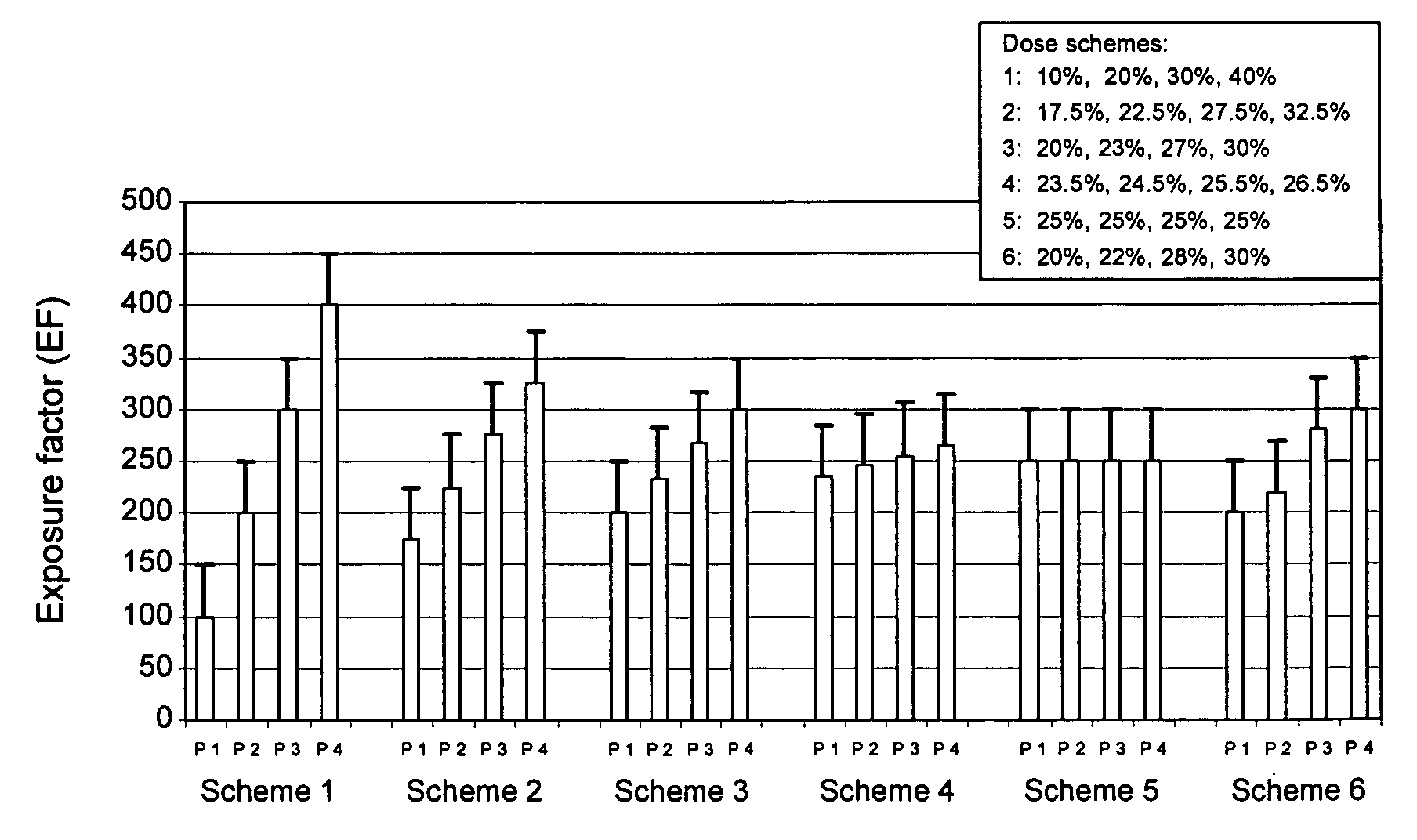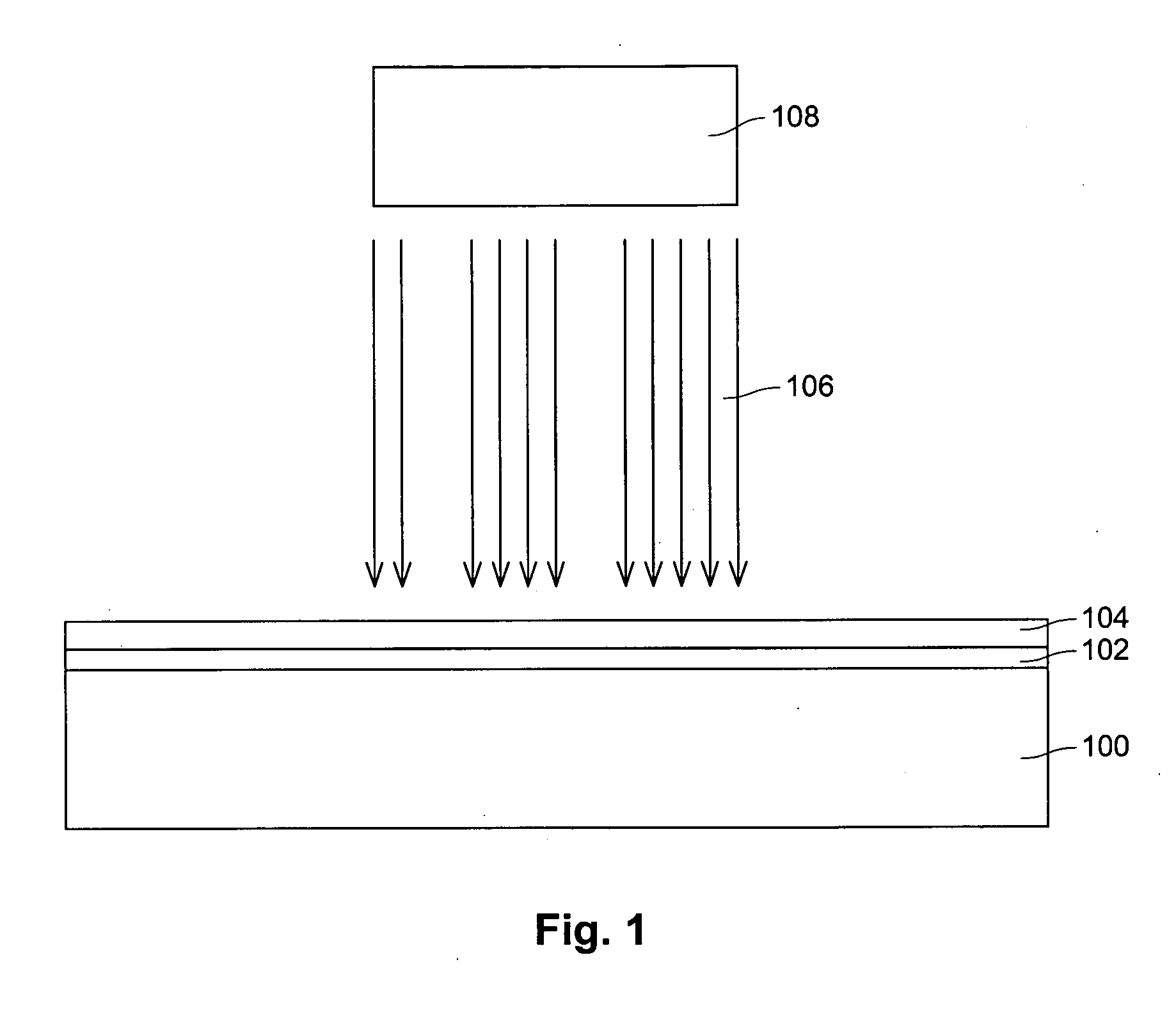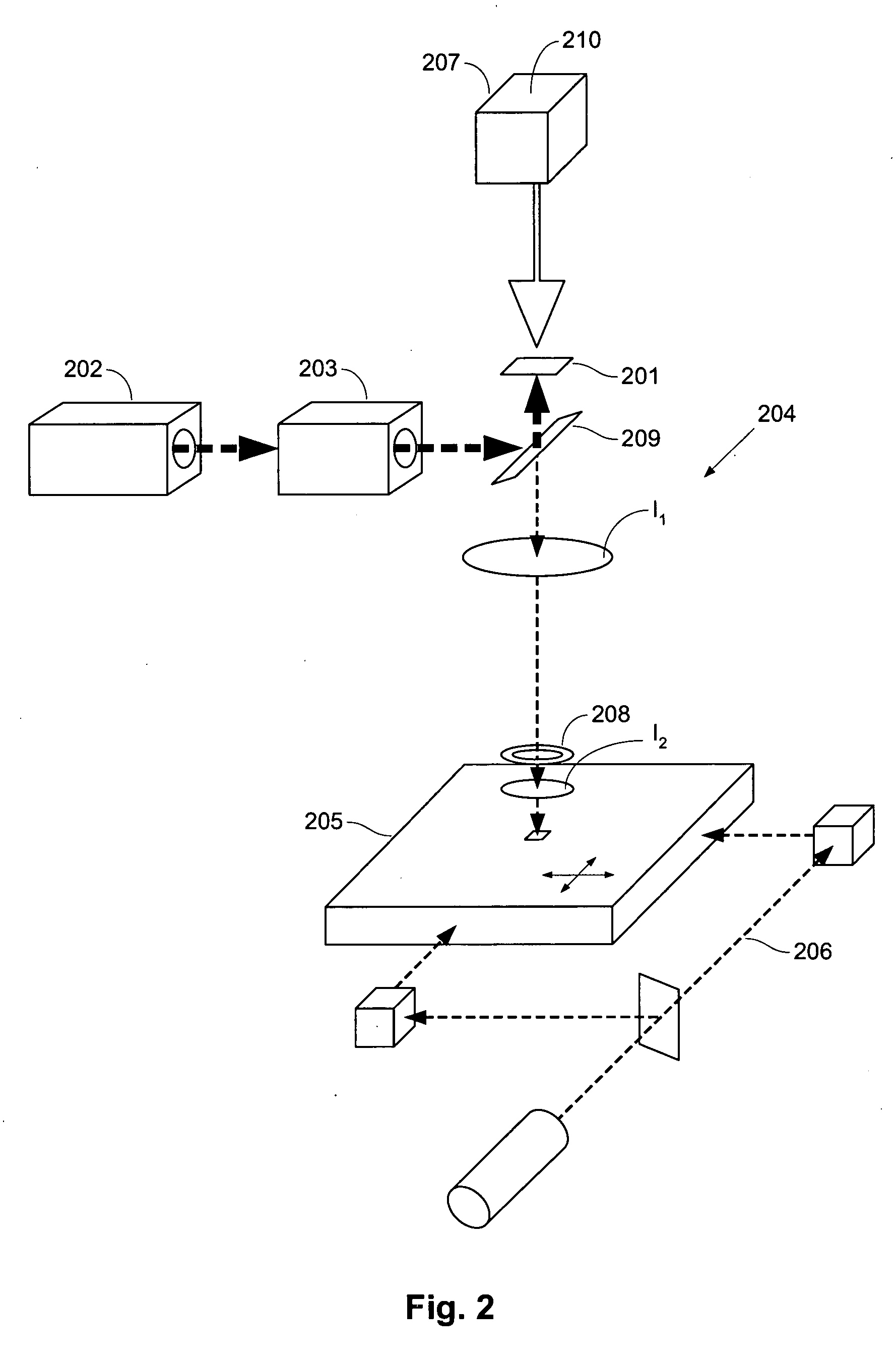Further method to pattern a substrate
a substrate and patterning technology, applied in the field of patterning substrates, can solve the problems of reducing lithographic performance, reducing criticality, and moving from traditional dnq/novolak based to chemically amplified resist processing,
- Summary
- Abstract
- Description
- Claims
- Application Information
AI Technical Summary
Benefits of technology
Problems solved by technology
Method used
Image
Examples
Embodiment Construction
The following detailed description is made with reference to the figures. Preferred embodiments are described to illustrate the present invention, not to limit its scope, which is defined by the claims. Those of ordinary skill in the art will recognize a variety of equivalent variations on the description that follows.
FIG. 1 depicts a coated substrate 100 including a masking or non-transmissive layer 102 and a resist layer 104. The substrate 100 may be a quartz substrate, an Erodent ceramic substrate or an ULE™ glass substrate when said substrate is to be a reticle or mask. However, when making integrated circuits by direct writing, said substrate may by any kind of semiconducting material. In such case the resist is applied directly onto said substrate.
The mask is formed over the transmissive substrate to block the passage of an energy beam in areas where resist on a wafer are intended not to be exposed. Unmasked portions of the substrate 100 allow an energy beam to pass throug...
PUM
| Property | Measurement | Unit |
|---|---|---|
| feature size | aaaaa | aaaaa |
| thick | aaaaa | aaaaa |
| exposure threshold | aaaaa | aaaaa |
Abstract
Description
Claims
Application Information
 Login to View More
Login to View More - R&D
- Intellectual Property
- Life Sciences
- Materials
- Tech Scout
- Unparalleled Data Quality
- Higher Quality Content
- 60% Fewer Hallucinations
Browse by: Latest US Patents, China's latest patents, Technical Efficacy Thesaurus, Application Domain, Technology Topic, Popular Technical Reports.
© 2025 PatSnap. All rights reserved.Legal|Privacy policy|Modern Slavery Act Transparency Statement|Sitemap|About US| Contact US: help@patsnap.com



